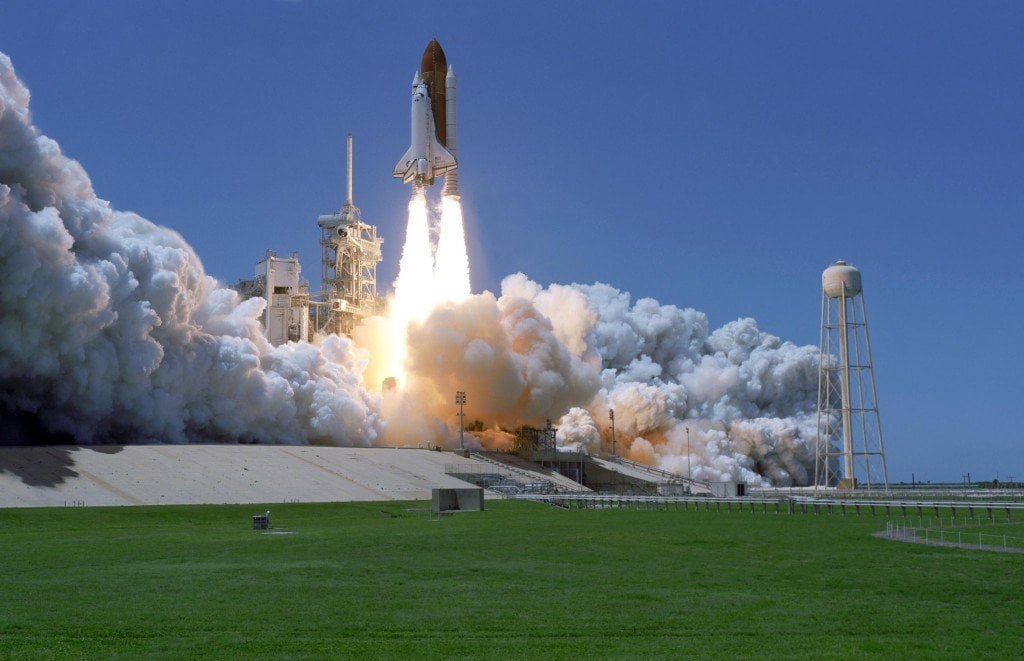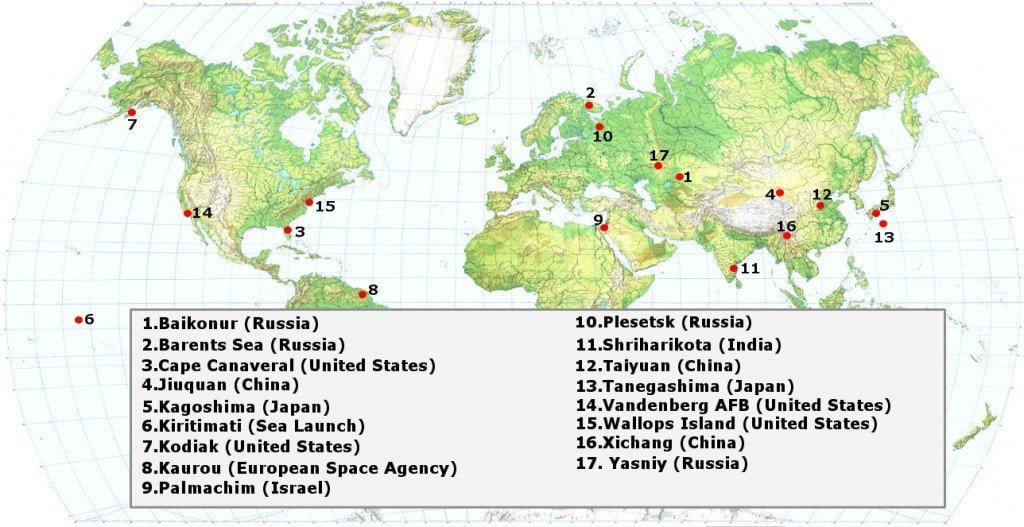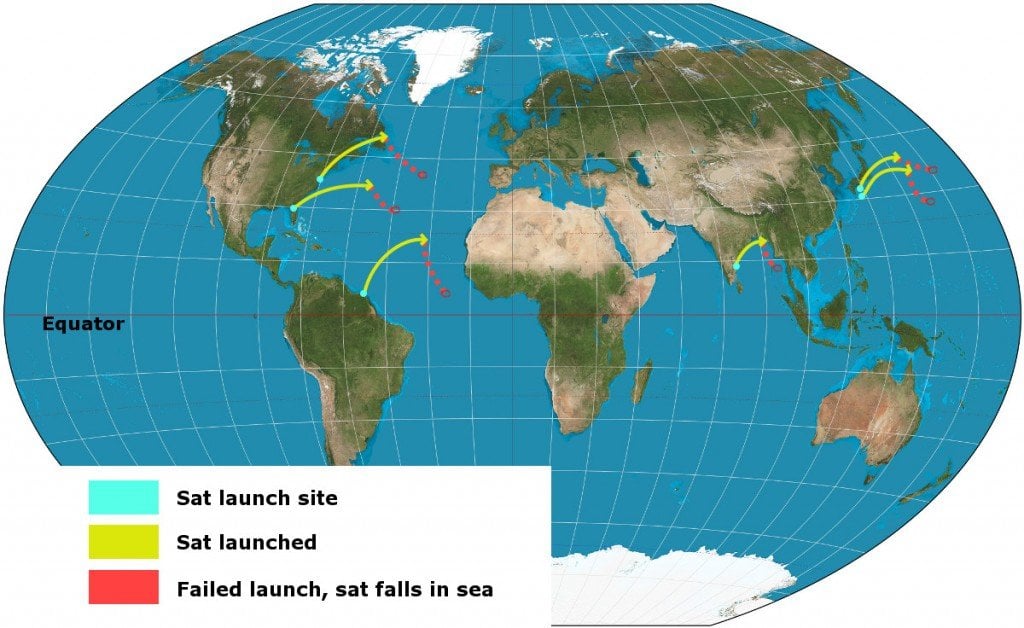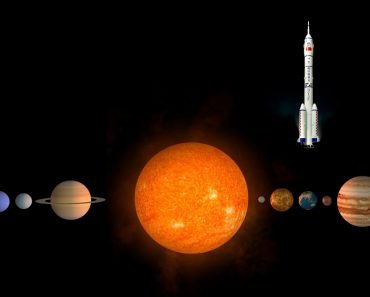There are a few reasons why rockets are launched from areas near the equator. One reason is that launching a rocket from the east coast gives it an additional boost due to the rotational speed of Earth. Another reason is that if something goes wrong during the ascent, the debris will fall into an ocean instead of a densely populated area. Additionally, most launch sites are located near the equator because rockets launched from these sites get an additional natural boost that helps save on fuel and boosters.
Here’s a quick question: what do Florida (US), Sriharikota (India) and Kourou (French Guiana) all have in common?

All these locations hold spaceports where rockets are launched into space!
Do you know why these sites are preferred over others for launching rockets? Why is Florida, which is located in the southeast United States and known to be prone to hurricanes and other weather-related events, chosen to be a launch site for so many rockets?
Recommended Video for you:
Why Are Most Rockets Launched From The East Coast Of Countries?
Short answer: Launching a rocket from the east coast gives an additional boost to the rocket, due to the rotational speed of Earth. Also, these rockets travel eastward, so if anything goes wrong during their ascent, the debris would essentially fall into an ocean’s waters, far away from densely populated areas.
How Does A Launch Site For A Rocket Get Chosen?
The choice of the perfect launch site for spacecraft, quite predictably, involves the study and analysis of many different parameters. One of the primary concerns of space engineers and scientists is to ensure that the satellite in question gets as much natural ‘push’ as possible during its initial ascent.

How Do Satellites Benefit From Earth’s Revolution And Rotation During Their Ascent?
Hopefully you know that our planet revolves around the sun, and the speed with which it does that, i.e., the orbital speed of Earth, is 108,000 kmph (67,109 mph). It’s pretty evident that our planet moves very fast around the sun. If a rocket is launched in the same direction in which the planet is moving, the former therefore gets a good head start.
Benefit Of Earth’s Rotation For A Rocket Launch
The other kind of motion that our planet has is rotational, i.e., it continuously rotates on its axis. Quite interestingly, this rotational speed is not the same everywhere on the planet. It is at a maximum in those areas lying on the Equator (average equatorial speed: 1,040 mph or 1,674 kmph), but is virtually non-existent in the polar regions.
Now, given that Earth rotates from west to east, and you want to launch a rocket that is also supposed to go eastward, which place would you choose to launch your rocket so that you could benefit from the rotation of Earth?
If you took your Science classes seriously back in school, I’m pretty sure you’d choose a location where the rotational speed from west to east was the highest. That’s precisely what rocket scientists do as well. Keeping in mind that Earth’s rotational speed is the highest at the Equator, take a look at the most commonly used launch sites in the world:

It’s easy to notice that most launch sites are located close to the Equator. This is because rockets launched from sites near the Equator get an additional natural boost that helps save the cost of putting in extra fuel and boosters.
It’s Preferred To Establish A Launch Site In A Coastal Region
Rockets are complex machines weighing a couple hundred thousand pounds that are blasted off from a launch site. Needless to say, there are dozens of things that can go wrong during the launch, so scientists and space engineers must take countless contingencies into account to minimize the risks associated with rocket launches.
Probably the most hazardous situation pertaining to a rocket launch is failure in mid-flight, i.e., a scenario where something goes wrong in the rocket while it’s still in the sky. This could have many outcomes (some of which might not even adversely affect the flight too much), but those that involve a drastic fallout (like burning debris falling out of the sky and landing over inhabited areas) need to be addressed.
Now, take another look at the locations of launch sites on the world map:

You can see that quite a few of them, including the Kennedy Space Center in Florida (which conducts most of the rocket launches in the US) and the Satish Dhawan Space Center in Sriharikota (the most used space center in India), are located next to an open sea. Such a location for a launch site is chosen in an effort to minimize (if not completely eliminate) the risk to human life in the case of a failure during the initial ascent of a rocket.
However, as you can see, not all launch sites are adjacent to a sea, as there are also a number of other factors at play, such as the accessibility of a given location (it must be easily accessible from land, air and sea). Furthermore, there are a number of geopolitical constraints on the availability of such locations.
Another reason they launch rockets from places near the Equator (such as the southeast coast of the US) is that the satellites intended to attain a geostationary orbit (e.g., communication satellites) must have zero inclination with respect to the equatorial plane. If not, then they have to make complex course corrections and burn a lot of fuel to attain the proper orbit.

Note that not all satellites are launched from equatorial regions; satellites that need to achieve a polar orbit around Earth won’t have any use for the natural boost from earth’s rotation, as they are headed either in a northern or southern direction.
References (click to expand)
- Kennedy Space Center - Wikipedia. Wikipedia
- Guiana Space Centre - Wikipedia. Wikipedia
- Satish Dhawan Space Centre - Wikipedia. Wikipedia
- Launch a rocket from a spinning planet | NASA Space Place. The National Aeronautics and Space Administration
- Launch Sites | NASA. The National Aeronautics and Space Administration













